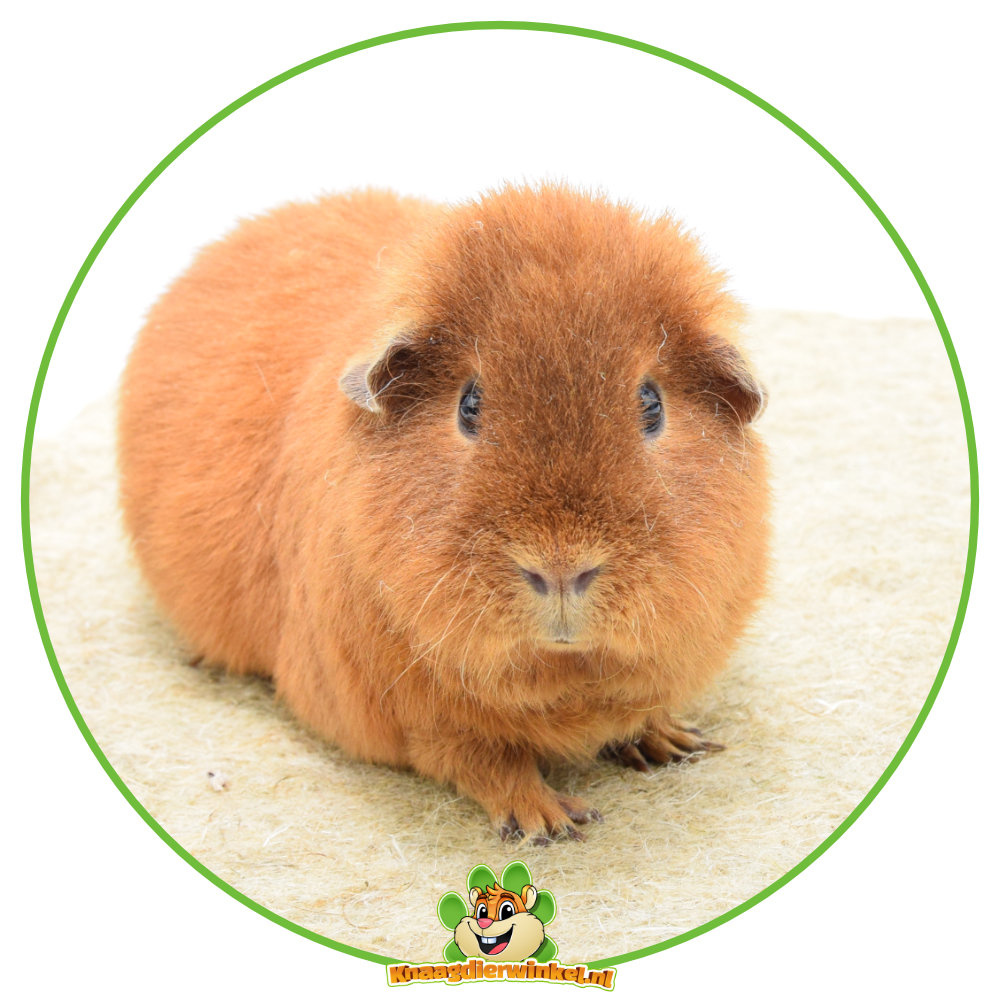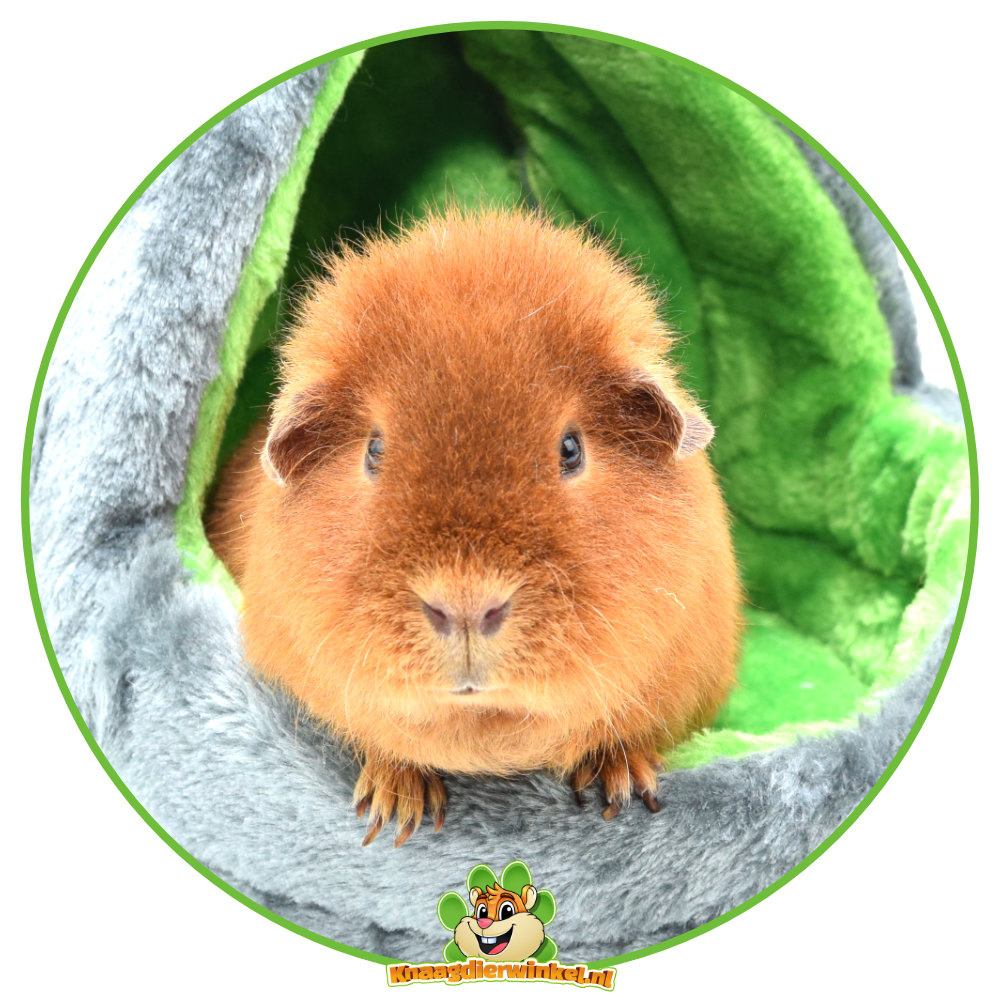The guinea pig as a pet
 Guinea pigs are charming and affectionate pets that have been loved for centuries for their gentle nature and adorable appearance. If you are considering bringing a guinea pig into your home, you are on your way to an exciting and satisfying experience. In this comprehensive guide, we share everything you need to know before welcoming a guinea pig into your life.
Guinea pigs are charming and affectionate pets that have been loved for centuries for their gentle nature and adorable appearance. If you are considering bringing a guinea pig into your home, you are on your way to an exciting and satisfying experience. In this comprehensive guide, we share everything you need to know before welcoming a guinea pig into your life.
Although they are on the menu in some countries, in the Netherlands they are precious pets that you will love within 2 seconds!
The Guinea pig's way of communicating is particularly recognizable. The beeps as soon as the refrigerator opens and the cheerful look when he sees you with something tasty. Beautiful!
Guinea pigs are very friendly animals that live in groups. In our home, a guinea pig should never be kept alone. Always at least two Guinea pigs.
Systematics: Cavia tschudii, Family Cavidae, Order Rodenita
Head-body length: 30 cm (20 to 40 cm)
Body weight: 450 to 1,000 g (max. to 1,800 g), males are larger than females
Life expectancy : 6 to 8 years
Guinea Pigs 101: An Introduction to These Beautiful Animals
Guinea pigs belong to the rodent family and originate from South America. They are known for their soft coat, big eyes and friendly personalities. These social animals thrive in the company of others of their own kind and can even learn to form strong bonds with their human caregivers.
A beloved pet around the world, the guinea pig has its origins in the beautiful landscapes of South America. But what do you actually know about their wild ancestors and their natural habitat?
In the wild, guinea pigs are found in various parts of South America, but they have a special affinity with the majestic Andes Mountains. Here, at high altitudes between 1600 and 4200 meters, they have made their home in countries such as Peru, Bolivia and Argentina.
It is mainly the tschudi guinea pigs that thrive in this impressive mountain environment. Despite the challenging altitudes and sometimes harsh weather conditions, they have adapted to life in this rugged terrain. Their coat, originally developed for protection against the cold, is a defining feature of these wild guinea pigs.
In their natural habitat they live in small groups, feeding on a diet of grasses, leaves and other plant materials available in their environment. These wild guinea pigs have adapted to their mountainous environment and have developed unique survival mechanisms to thrive in an environment that seems inhospitable to many.
Understanding the guinea pig's origins and natural behavior in the wild can help us better understand these adorable pets and provide an environment that respects their natural instincts and needs. So the next time you look at your pet, imagine how its wild ancestors once roamed the vast mountains of South America, thriving in the rugged splendor of the Andes.
Which food is good for guinea pigs?
 A balanced diet is vital for your guinea pig's health. Ensure a constant supply of fresh hay , high-quality guinea pig food and a varied range of herbs , vegetables and fruit .
A balanced diet is vital for your guinea pig's health. Ensure a constant supply of fresh hay , high-quality guinea pig food and a varied range of herbs , vegetables and fruit .
How does the guinea pig's digestive system work?
Guinea pigs have a unique digestive system that is adapted to their natural diet and lifestyle. In the wild, guinea pigs are accustomed to eating small amounts of food throughout the day, resulting in a slow but steady digestive process. This adaptation has evolved to help them efficiently extract nutrients from their food while constantly foraging for food in their natural environment.
The digestive process begins in the guinea pig's mouth, where food is chewed and mixed with saliva to aid digestion. From there, the food goes to the stomach, where it is broken down by stomach acid and enzymes. Interestingly, guinea pigs have a relatively weak stomach compared to other animals, meaning they cannot process large amounts of food at once.
After the stomach, the food goes to the back of the intestines, where it is further broken down and the nutrients are absorbed. Eating raw fiber, such as hay and vegetables, extends the duration of feed intake. This is beneficial because it stimulates intestinal movement and aids digestion, allowing guinea pigs to get the most out of their food.
Guinea pigs' ability to eat small portions of food and efficiently absorb nutrients from crude fiber is essential to their health and well-being. By mimicking their natural diet and offering a varied diet high in fiber, guinea pig owners can ensure their pets live healthy and happy lives.
Are herbs healthy for guinea pigs?
Guinea pig herbs are important for your guinea pigs. The diet of the wild guinea pig consists mainly of grasses and herbs. There are different types of guinea pig herbs, both fresh and dried. Both types of herbs can be given as a supplement to your guinea pig's daily diet!
Guinea pigs naturally love grass and herbs, and their diet in the wild consists mainly of these natural treats. Parsley is a favorite among guinea pigs because of its delicious taste and high vitamin C content. It is a treat that is not only tasty, but also a healthy addition to your guinea pig's diet.

Why Do Guinea Pigs Need Gnawing Material?
Guinea pigs are rodents by nature, and their need to chew is not just a preference, but a necessity. To prevent their incisors from becoming too long or growing crooked, guinea pigs must gnaw regularly. Gnawing material plays a crucial role in this.
An Overview of our Chewing Wood for Guinea Pigs :
Linden: Soft and light in texture, ideal for guinea pigs who like softer materials.
Willow: With a crispy bark and juicy interior, perfect for active rodents.
Hazelnut: Hearty and tasty, for guinea pigs that like to be challenged while gnawing.
Birch: Light and airy, suitable for guinea pigs with different gnawing preferences.
Beech: Sturdy and durable, for guinea pigs who enjoy long-lasting gnawing pleasure.
Apple: Medium texture with a mild taste, ideal for active tooth grinders.
Coffeewood: Soft and smooth in texture, with a natural, earthy flavor for a long-lasting gnawing experience.
Wood and Branches of Herbs: A tasty variation for guinea pigs who love aroma.
Healthcare: Maintaining Your Guinea Pig's Well-Being
Regular health checks and good hygiene are crucial to keeping your guinea pig happy and healthy. Keep the coat clean and free of tangles, trim the nails as necessary, and provide regular dental care by offering chew toys and high-fiber foods.
How do you use gnawing wood for guinea pigs?
 Simply place the gnawing wood in your guinea pig's enclosure and they will instinctively nibble on it whenever the need arises. Thanks to its durability, you do not have to replace the gnawing wood every time you clean it, only wet wood needs to be removed to prevent mold formation.
Simply place the gnawing wood in your guinea pig's enclosure and they will instinctively nibble on it whenever the need arises. Thanks to its durability, you do not have to replace the gnawing wood every time you clean it, only wet wood needs to be removed to prevent mold formation.
Gnawing wood from the garden or picking outside?
It is strongly discouraged to pick rodents from the garden or outside, as this entails risks such as parasites and contaminants. Our carefully selected gnawing wood ensures a safe and healthy gnawing experience for your guinea pigs.
What is good housing for guinea pigs?
Providing suitable housing is essential for the well-being and health of guinea pigs. Here are some important aspects to consider when creating a comfortable and safe living environment for these beloved pets:
Cage size : A spacious cage is crucial for guinea pigs, as they need plenty of room to move around. The minimum recommended size for one guinea pig is approximately 70 by 120 centimeters, but bigger is always better. Make sure the cage is long enough to allow the guinea pig to run and play.
Bedding : Choose a bedding that is comfortable for the guinea pig's feet and is absorbent at the same time. Popular options include hay, straw, paper coverings or special cage mats. Avoid poisonous woods such as cedar.
Hiding places : Provide hiding places in the cage where the guinea pig can retreat to rest and feel safe. These can be small houses, tunnels or even folded towels.
Food and water : Place food bowls and drinking bottles in an easily accessible place in the cage. Make sure the water bottle is always filled with fresh water and the food is refilled regularly.
Toys and enrichment : Provide a variety of toys and enrichment elements in the cage to prevent boredom and stimulate the guinea pig's natural curiosity. These can be tunnels, hay balloons, chew toys or even simple cardboard boxes.
Hygiene : Keep the cage clean by regularly changing the bedding and cleaning the cage thoroughly. Remove excess food and feces every day and clean the food bowls and drinking bottles regularly.
Location : Place the cage in a quiet, draft-free location, away from direct sunlight and extreme temperatures. A constant room temperature between 18 and 24 degrees Celsius is ideal for guinea pigs.
By following these guidelines and providing a comfortable, safe and stimulating environment, you can ensure your guinea pigs stay happy and healthy. Don't forget to spend time with your pets regularly and give them the loving care and attention they deserve! 
